How Do Pad Mounted Transformers Work: A Simple Guide for Non-Engineers?
Have you ever wondered about those green boxes in your neighborhood? They’re more important than you think!
Pad mounted transformers are essential electrical devices that convert high voltage electricity from power lines to a lower, usable voltage for homes and businesses. They’re the unsung heroes of our power grid, working silently to keep our lights on and appliances running.
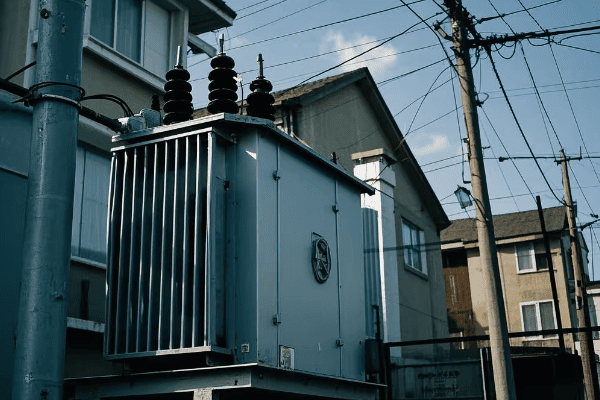
Let’s dive into the world of pad mounted transformers and uncover their secrets. Trust me, by the end of this article, you’ll see these green boxes in a whole new light!
What Is a Pad Mounted Transformer: The Green Box Powering Your Neighborhood?
Ever walked past a green metal box and wondered what it’s doing there? Well, you’re not alone!
A pad mounted transformer is a type of electrical transformer housed in a large metal enclosure, typically green, that sits on a concrete pad. It’s designed to step down high voltage electricity to a lower voltage that’s safe for use in homes and businesses.
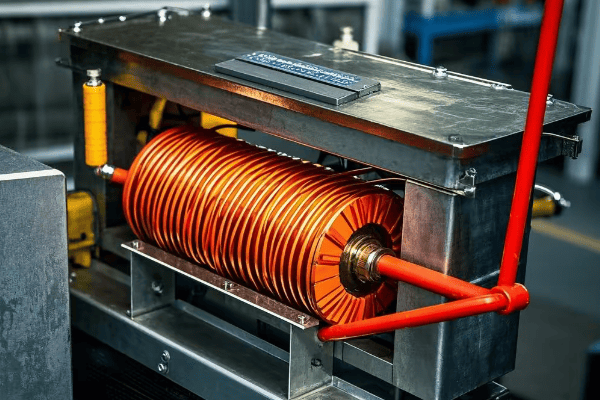
In my years working with power systems, I’ve come to appreciate these unassuming boxes. They’re the silent workhorses of our electrical grid, and here’s why they’re so important:
The Role of Pad Mounted Transformers
-
Voltage Conversion: They take high voltage electricity (usually 7,200 to 14,400 volts) and convert it to a lower voltage (typically 120/240 volts for residential use).
-
Distribution: They serve as a crucial link between the main power lines and individual buildings.
-
Safety: By keeping high voltage components enclosed, they protect the public from electrical hazards.
| Feature | Purpose |
|---|---|
| Green Color | Blend into surroundings |
| Padlock | Prevent unauthorized access |
| Warning Signs | Alert people to potential dangers |
| Concrete Pad | Provide stable foundation |
These transformers are a testament to modern electrical engineering. They’re designed to be efficient, safe, and relatively inconspicuous. Next time you see one, you’ll know you’re looking at a key player in bringing power to your home!
The Basic Principles of Pad Mounted Transformers: Electricity 101 for Homeowners
Ever flipped a light switch and wondered how that electricity got to your home? Let’s break it down!
Pad mounted transformers work on the principle of electromagnetic induction. They use coils of wire and a magnetic field to change the voltage of electricity, making it safe for use in our homes.

As someone who’s spent years working with these devices, I can tell you that understanding the basics can be incredibly empowering. Let’s dive deeper into how these transformers work:
How Transformers Change Voltage
-
Primary Coil: This is where high voltage electricity enters the transformer.
-
Magnetic Core: Usually made of iron, it helps transfer energy between the coils.
-
Secondary Coil: This is where the transformed, lower voltage electricity exits.
The magic happens in the relationship between these components:
| Component | Function |
|---|---|
| Primary Coil | Receives high voltage |
| Magnetic Core | Transfers energy |
| Secondary Coil | Outputs lower voltage |
The number of turns in each coil determines the voltage change. More turns in the primary coil than the secondary results in a step-down transformer, which is what we use in residential areas.
The Importance of Transformers in Your Daily Life
Think about all the devices you use daily – your phone charger, your refrigerator, your TV. None of these could function safely without the voltage transformation that occurs in pad mounted transformers.
I remember a time when a neighborhood’s transformer failed. Suddenly, everyone realized how crucial these green boxes were! It’s a bit like not noticing your heart beating until something goes wrong.
Understanding these principles can help you appreciate the complex system that powers our modern lives. It’s not just about flipping a switch – it’s about a carefully designed system that safely brings electricity from power plants to your home.
Inside a Pad Mounted Transformer: A Peek Behind the Metal Doors
Have you ever been curious about what’s inside those green boxes? Let’s take a look!
Inside a pad mounted transformer, you’ll find a complex array of components including coils, a core, insulating oil, and various safety devices. It’s a carefully engineered system designed to efficiently and safely transform electricity.

In my years of working with these transformers, I’ve had the opportunity to see inside many of them. It’s always fascinating, and I’m excited to share what I’ve learned with you:
Key Components Inside a Pad Mounted Transformer
-
Transformer Core: This is usually made of laminated steel sheets. It’s the heart of the transformer, where the magnetic field is created.
-
Primary and Secondary Windings: These are coils of wire wrapped around the core. The primary winding receives the high voltage, while the secondary winding outputs the lower voltage.
-
Insulating Oil: This oil serves two purposes – it insulates the electrical components and helps cool the transformer.
-
Bushings: These are the connection points where electricity enters and exits the transformer.
-
Tap Changer: This allows for small adjustments in the voltage ratio.
-
Safety Devices: These include fuses, circuit breakers, and pressure relief valves.
Let’s break this down in a table:
| Component | Function |
|---|---|
| Core | Creates magnetic field |
| Windings | Transform voltage |
| Insulating Oil | Insulates and cools |
| Bushings | Connect to external circuits |
| Tap Changer | Adjusts voltage ratio |
| Safety Devices | Protect against faults |
The Transformation Process
When electricity enters the primary winding, it creates a magnetic field in the core. This field then induces a current in the secondary winding. The ratio of turns between the primary and secondary windings determines the voltage change.
I once had the chance to observe a transformer during a maintenance check. Seeing the oil drained and the internal components exposed was like looking at the inner workings of a mechanical heart. It gave me a new appreciation for the engineering that goes into these devices.
Understanding what’s inside a pad mounted transformer can help you appreciate the complexity of our power distribution system. These aren’t just simple metal boxes – they’re marvels of electrical engineering, working tirelessly to power our world.
Voltage Transformation Explained: How Pad Mounted Transformers Deliver Usable Power
Ever wondered how the massive voltage from power lines becomes the safe 120 volts in your home? Let’s unravel this mystery!
Pad mounted transformers use electromagnetic induction to step down high voltage electricity to a lower, safer voltage. They do this by using different numbers of wire turns in the primary and secondary coils.
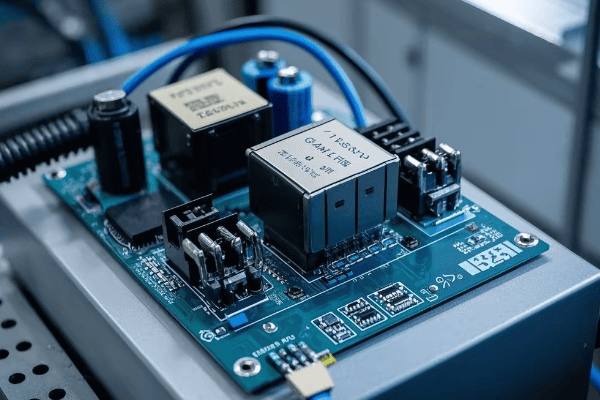
In my career, I’ve seen how crucial this process is. Let me break it down for you:
The Voltage Transformation Process
-
High Voltage Input: Electricity enters the transformer at high voltage, typically 7,200 to 14,400 volts.
-
Primary Coil: This coil has many turns of wire. The high voltage creates a strong magnetic field.
-
Magnetic Core: The field created by the primary coil is concentrated in the core.
-
Secondary Coil: This coil has fewer turns. The changing magnetic field induces a lower voltage here.
-
Low Voltage Output: The electricity leaves the transformer at a lower voltage, usually 120/240 volts for homes.
Here’s a simplified look at the process:
| Stage | Voltage |
|---|---|
| Power Line | 7,200 – 14,400 V |
| Primary Coil | 7,200 – 14,400 V |
| Secondary Coil | 120/240 V |
| Your Home | 120/240 V |
The Math Behind the Magic
The ratio of voltage change is directly related to the ratio of turns in the coils. For example, if the primary coil has 100 turns and the secondary has 5, the voltage will be reduced by a factor of 20.
I remember explaining this to a group of students once. To demonstrate, I used a simple hand-crank generator connected to different coils. Seeing their faces light up (pun intended!) when they understood the relationship between turns and voltage was a great moment.
Why This Matters
This voltage transformation is crucial for several reasons:
-
Safety: High voltage is dangerous. Transforming it to a lower voltage makes it safe for home use.
-
Efficiency: High voltage is more efficient for long-distance transmission, but impractical for home use.
-
Appliance Compatibility: Our home appliances are designed to work with lower voltages.
Understanding this process helps us appreciate the complex system that delivers power to our homes. It’s not just about flipping a switch – it’s about a carefully engineered process that safely brings electricity from power plants to your living room.
Safety Features of Pad Mounted Transformers: Protecting Your Community
Ever wondered how these electrical powerhouses keep us safe? Let’s explore the safety features!
Pad mounted transformers are equipped with multiple safety features including locked enclosures, insulating oil, circuit breakers, and warning signs. These features work together to prevent accidents and protect both the public and utility workers.
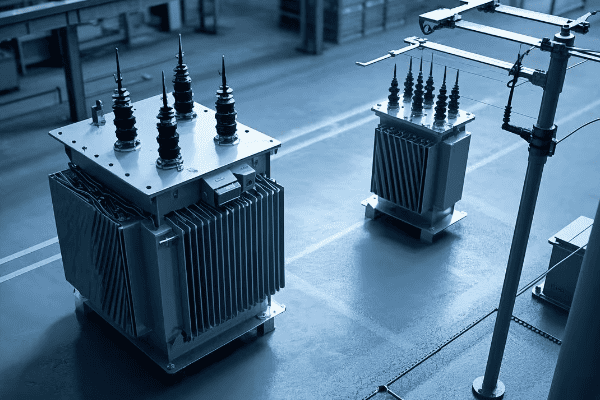
In my years working with these transformers, I’ve seen firsthand how crucial these safety features are. Let me walk you through them:
Key Safety Features
-
Locked Enclosure: The transformer is housed in a sturdy, locked metal cabinet. This prevents unauthorized access.
-
Insulating Oil: This oil not only cools the transformer but also provides electrical insulation.
-
Circuit Breakers and Fuses: These devices automatically cut power in case of a fault or overload.
-
Pressure Relief Device: This prevents explosion in case of excessive internal pressure.
-
Warning Signs: Clear signs warn of the dangers of high voltage.
-
Grounding: The transformer is properly grounded to prevent electric shock.
Let’s break this down:
| Safety Feature | Purpose |
|---|---|
| Locked Enclosure | Prevent unauthorized access |
| Insulating Oil | Cool and insulate |
| Circuit Breakers | Protect against faults |
| Pressure Relief | Prevent explosion |
| Warning Signs | Alert to dangers |
| Grounding | Prevent electric shock |
Real-World Safety in Action
I once witnessed a car accident where a vehicle crashed into a pad mounted transformer. Thanks to the robust enclosure and automatic shutoff features, there was no electrical fire or shock risk. It really drove home the importance of these safety measures.
Why These Features Matter
-
Public Safety: These features keep curious children and adults safe from high voltage equipment.
-
Worker Safety: Utility workers can safely maintain and repair these transformers.
-
Equipment Protection: The safety features also protect the expensive transformer from damage.
-
Reliability: By preventing accidents and damage, these features help ensure a stable power supply.
Understanding these safety features can help you appreciate the thought and engineering that goes into keeping our communities safe. Next time you see a pad mounted transformer, you’ll know it’s not just delivering power – it’s doing so with your safety in mind.
Pad Mounted vs. Pole Mounted Transformers: What’s the Difference?
Ever noticed some transformers are on poles while others are on the ground? Let’s compare these two types!
Pad mounted transformers sit on the ground in locked cabinets, while pole mounted transformers are attached to utility poles. Pad mounted transformers are often used in underground power systems, while pole mounted transformers are common in overhead systems.

In my career, I’ve worked with both types. Each has its place in our power distribution system. Let’s dive into the differences:
Key Differences
-
Location: Pad mounted are on the ground, pole mounted are on utility poles.
-
Appearance: Pad mounted are in green boxes, pole mounted are cylindrical and exposed.
-
Capacity: Pad mounted often have higher capacity due to size flexibility.
-
Accessibility: Pad mounted are easier to access for maintenance.
-
Safety: Pad mounted have locked enclosures, pole mounted rely on height for safety.
-
Aesthetics: Pad mounted are less visually obtrusive in residential areas.
Let’s compare in a table:
| Feature | Pad Mounted | Pole Mounted |
|---|---|---|
| Location | Ground | Utility Pole |
| Appearance | Green Box | Cylindrical |
| Capacity | Often Higher | Generally Lower |
| Accessibility | Easy | Requires Climbing |
| Safety | Locked Enclosure | Height |
| Aesthetics | Less Obtrusive | More Visible |
When to Use Each Type
Pad mounted transformers are ideal for:
- Underground power systems
- Areas with high aesthetic concerns
- Locations needing higher capacity
Pole mounted transformers are better for:
- Overhead power systems
- Areas prone to flooding
- Quick installation and lower cost
I remember a project where we replaced pole mounted transformers with pad mounted ones in a residential area. The residents were thrilled with the improved aesthetics and the reduced risk of power outages during storms.
Impact on Power Distribution
-
Reliability: Pad mounted transformers, being underground, are less affected by weather.
-
Maintenance: Pad mounted transformers are easier and safer to maintain.
-
Expansion: Pad mounted transformers allow for easier capacity upgrades.
-
Cost: While initially more expensive, pad mounted transformers can be more cost-effective long-term.
Understanding these differences can help you appreciate the thought that goes into power distribution in different areas. Whether you see a green box or a cylinder on a pole, you now know each has its specific role in bringing power to your community.
The Role of Pad Mounted Transformers in Your Daily Life: From Charging Phones to Powering Appliances
Ever stopped to think about how your daily activities depend on these green boxes? Let’s explore!
Pad mounted transformers play a crucial role in our daily lives by providing the right voltage for all our electrical needs. From charging your phone to running your refrigerator, these transformers ensure a steady, safe power supply to your home.

In my years in the power industry, I’ve seen how these transformers touch every aspect of modern life. Let me break it down for you:
How Pad Mounted Transformers Power Your Day
-
Morning Routine: Your alarm clock, coffee maker, and toaster all run on power from these transformers.
-
Work and Study: Your computer, internet router, and lights are all powered by transformed electricity.
-
Home Comfort: Your HVAC system, which keeps you cool in summer and warm in winter, relies on these transformers.
-
Entertainment: Your TV, gaming console, and sound system all draw power that’s been stepped down by a pad mounted transformer.
-
Kitchen Appliances: Your refrigerator, oven, and dishwasher all use electricity from these transformers.
-
Outdoor Living: Even your porch lights and electric grill get their power from these devices.
Let’s look at the power usage of common appliances:
| Appliance | Typical Wattage |
|---|---|
| Refrigerator | 150-400 watts |
| TV | 80-400 watts |
| Laptop | 50-100 watts |
| Air Conditioner | 750-3500 watts |
| Electric Oven | 2000-5000 watts |
The Invisible Helper
I once had a neighbor
I once had a neighbor who was curious about why we needed these transformers. I explained it by comparing it to a water system. Just as we need to reduce water pressure from main lines to use it safely in our homes, we need to reduce electrical voltage for safe home use. The light bulb moment on his face was priceless!
Impact on Modern Lifestyle
-
Constant Connectivity: Our always-on digital lifestyle depends on a steady power supply.
-
Home Office: The rise of remote work has made residential power reliability more crucial than ever.
-
Smart Homes: The growing Internet of Things (IoT) devices all rely on transformed power.
-
Electric Vehicles: As more people switch to EVs, home charging stations are becoming common, increasing the importance of residential power transformation.
Understanding the role of pad mounted transformers helps us appreciate the complex infrastructure that supports our modern lifestyle. From the moment you wake up to when you go to sleep, these unassuming green boxes are working tirelessly to power your world.
Common Myths About Pad Mounted Transformers: Separating Fact from Fiction
Ever heard some wild stories about those green boxes in your neighborhood? Let’s bust some myths!
There are many misconceptions about pad mounted transformers, from fears of radiation to beliefs about their impact on property values. Most of these myths are unfounded, and understanding the facts can help alleviate unnecessary concerns.

In my years working with these transformers, I’ve heard it all. Let’s tackle some common myths:
Myth 1: Pad Mounted Transformers Emit Harmful Radiation
Fact: Pad mounted transformers produce extremely low-level electromagnetic fields, similar to many household appliances. These levels are well below safety limits set by health organizations.
Myth 2: Living Near a Transformer Increases Cancer Risk
Fact: Numerous studies have found no conclusive evidence linking low-level electromagnetic fields from transformers to increased cancer risk.
Myth 3: Transformers Are a Fire Hazard
Fact: While any electrical equipment can potentially malfunction, pad mounted transformers are designed with multiple safety features to prevent fires. Incidents are extremely rare.
Myth 4: Transformers Significantly Decrease Property Values
Fact: There’s no substantial evidence that properly maintained pad mounted transformers negatively impact property values. They’re a necessary part of modern infrastructure.
Myth 5: Transformers Make a Lot of Noise
Fact: Modern pad mounted transformers are designed to operate quietly. Any unusual noise should be reported to the utility company for inspection.
Let’s compare some of these myths and facts:
| Myth | Fact |
|---|---|
| Harmful Radiation | Low-level EMF, similar to appliances |
| Cancer Risk | No conclusive evidence of increased risk |
| Fire Hazard | Multiple safety features, rare incidents |
| Decrease Property Value | No substantial evidence of impact |
| Noisy Operation | Designed for quiet operation |
I remember a community meeting where these myths came up. By explaining the facts and even showing EMF readings from a transformer compared to common household items, we were able to allay many concerns.
Why These Myths Persist
-
Fear of the Unknown: Many people don’t understand how transformers work, leading to unfounded fears.
-
Misinterpretation of Data: Some studies on high-voltage power lines get incorrectly applied to pad mounted transformers.
-
Urban Legends: Misinformation can spread quickly in neighborhoods.
-
Confirmation Bias: People tend to remember information that confirms their existing beliefs.
Understanding the facts about pad mounted transformers can help communities make informed decisions and reduce unnecessary anxiety. These devices are crucial to our power infrastructure and are designed with safety as a top priority.
Maintenance of Pad Mounted Transformers: What Homeowners Should Know
Ever wondered who takes care of those green boxes? Let’s explore the maintenance process!
Pad mounted transformers require regular maintenance to ensure reliable operation. While utility companies are responsible for this maintenance, homeowners play a role in keeping the area around transformers accessible and reporting any issues.
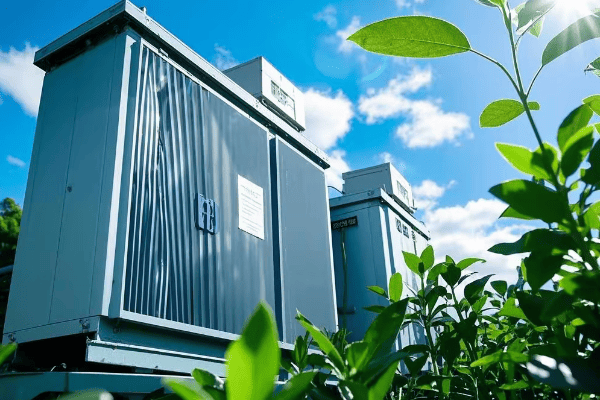
In my experience, proper maintenance is crucial for the longevity and safety of these transformers. Here’s what you should know:
Utility Company Responsibilities
-
Regular Inspections: Utilities perform periodic visual and thermal inspections.
-
Oil Testing: The insulating oil is tested for contaminants and dielectric strength.
-
Component Replacement: Worn or damaged parts are replaced as needed.
-
Cleaning: The interior is cleaned to prevent buildup of dirt and debris.
-
Load Management: Transformers are monitored to ensure they’re not overloaded.
Homeowner Responsibilities
-
Keep Area Clear: Maintain a 10-foot clearance around the transformer.
-
Report Issues: Notify the utility of any visible damage or unusual noises.
-
Avoid Tampering: Never attempt to open or modify the transformer.
-
Landscaping Considerations: Avoid planting trees or large shrubs near transformers.
Let’s break down the maintenance schedule:
| Maintenance Task | Frequency | Responsible Party |
|---|---|---|
| Visual Inspection | Monthly | Utility Company |
| Oil Testing | Annually | Utility Company |
| Thermal Imaging | Annually | Utility Company |
| Area Clearance | Ongoing | Homeowner |
| Reporting Issues | As Needed | Homeowner |
I once had a situation where a homeowner’s overgrown bushes were impeding access to a transformer. After explaining the importance of accessibility, they were more than happy to trim back the vegetation.
Why Proper Maintenance Matters
-
Reliability: Well-maintained transformers are less likely to fail, reducing power outages.
-
Safety: Regular inspections catch potential safety issues before they become problems.
-
Longevity: Proper maintenance can extend the life of the transformer, saving costs in the long run.
-
Efficiency: A well-maintained transformer operates more efficiently, potentially reducing energy losses.
Understanding the maintenance needs of pad mounted transformers helps homeowners play their part in ensuring a reliable power supply. Remember, while you shouldn’t touch the transformer itself, keeping the area around it clear and reporting any issues goes a long way in maintaining our electrical infrastructure.
Environmental Impact: Are Pad Mounted Transformers Eco-Friendly?
Ever wondered about the environmental footprint of those green boxes? Let’s explore their eco-impact!
Pad mounted transformers have both positive and negative environmental impacts. While they contribute to efficient power distribution, reducing overall energy loss, they also contain materials that require careful handling and disposal.
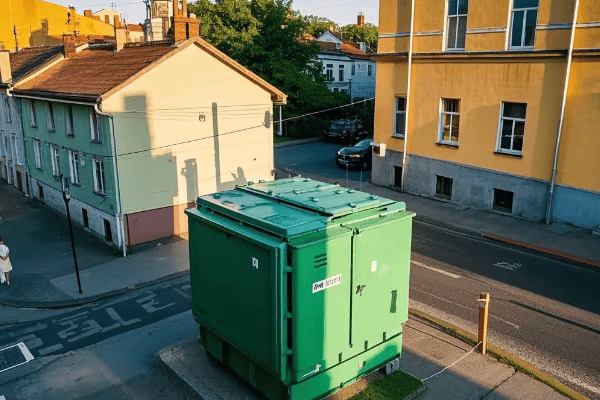
In my years in the industry, I’ve seen a growing focus on the environmental aspects of our infrastructure. Let’s break down the eco-friendliness of pad mounted transformers:
Positive Environmental Impacts
-
Energy Efficiency: By stepping down voltage close to the point of use, these transformers reduce transmission losses.
-
Land Use: Compared to substations, pad mounted transformers have a smaller footprint.
-
Noise Pollution: They operate quietly, reducing noise pollution in residential areas.
-
Aesthetics: Their compact design allows for better integration into landscapes.
Environmental Challenges
-
Oil Use: Many transformers use mineral oil, which can be an environmental concern if leaked.
-
PCB Legacy: Older transformers may contain PCBs, requiring special handling and disposal.
-
End-of-Life Disposal: Transformers contain materials that need proper recycling or disposal.
-
Manufacturing Impact: The production of transformers involves resource extraction and energy use.
Let’s compare some eco-aspects:
| Aspect | Positive Impact | Negative Impact |
|---|---|---|
| Energy Use | Reduces transmission losses | Requires energy for cooling |
| Materials | Recyclable metals | Some hazardous materials |
| Land Use | Small footprint | May impact local ecosystems |
| Lifespan | Long-lasting (20-30 years) | Eventual disposal needed |
I remember a project where we replaced old oil-filled transformers with newer, more eco-friendly dry-type transformers. The community was thrilled about the reduced environmental risk.
Innovations for Eco-Friendliness
-
Bio-based Oils: Some new transformers use vegetable-based oils instead of mineral oils.
-
Dry-Type Transformers: These eliminate the need for insulating oil altogether.
-
Smart Transformers: These can optimize power flow, further reducing energy losses.
-
Recycling Programs: Many utilities now have programs to recycle old transformer components.
The Bigger Picture
While pad mounted transformers do have some environmental impacts, they play a crucial role in our power infrastructure. Their efficiency in power distribution contributes to overall energy savings, which has a net positive environmental impact.
Understanding the environmental aspects of pad mounted transformers helps us appreciate the complexities of balancing our energy needs with environmental stewardship. As technology advances, we’re continually finding ways to make these essential devices more eco-friendly.
Conclusion
Pad mounted transformers are the unsung heroes of our electrical grid. They work tirelessly to bring safe, usable power to our homes and businesses. From their basic principles to their maintenance needs and environmental impact, these devices play a crucial role in our daily lives.
As we’ve explored, pad mounted transformers are marvels of engineering that balance efficiency, safety, and reliability. They’re not just green boxes on the street – they’re a vital link in the complex chain that powers our modern world.
Understanding these transformers helps us appreciate the infrastructure that supports our lifestyle. It also empowers us to be more informed community members, whether it’s knowing how to report issues or understanding the importance of keeping the area around transformers clear.
As technology evolves, so too will pad mounted transformers, becoming smarter, more efficient, and more environmentally friendly. But one thing will remain constant – their essential role in powering our world.
Next time you see one of these green boxes, you’ll know you’re looking at a key player in the amazing journey of electricity from power plant to your home. And that’s something worth appreciating!
🚀Next steps, you can:
A. Learn more about energy efficiency in your home
B. Explore other components of the electrical grid
C. Understand how to read your electricity bill
D. Investigate renewable energy integration with the grid
E. Discover careers in the electrical power industry
F. Find out how to report transformer issues in your area
Free CHBEB Transformer Catalog Download
Get the full range of CHBEB transformers in one catalog.
Includes oil-immersed, dry-type, pad-mounted, and custom solutions.
Quick Message
Request A free quote
We'd like to work with you
- +86 15558785111
- [email protected]
- +86 15558785111
What We Do
CHINA BEI ER BIAN (CHBEB) GROUP, with 218 million in registered capital, originated from Beijing Beierbian Transformer Group. Headquartered in Beijing for R&D, it operates major production bases in Nanjing and Yueqing, producing high-quality products.
Latest Product
address
BeiJing
No 3,RongJing East Road,BeiJing Economic Technological Development Area,BeiJing,China
JiangSu
No 7️Xiangfeng Road,Jiangning,NanJing,JiangSu,China
WenZhou
No.211, Wei 16 Road, Industrial Zone, Yueqing, Wenzhou, Zhejiang, China.
XiangYang Industrial Zone ,YueQing,WenZhou,ZheJiang,China
contact us
- [email protected]
- +86 13057780111
- +86 13057780111
- +86 15558785111
Copyright © Bei Er Bian Group


